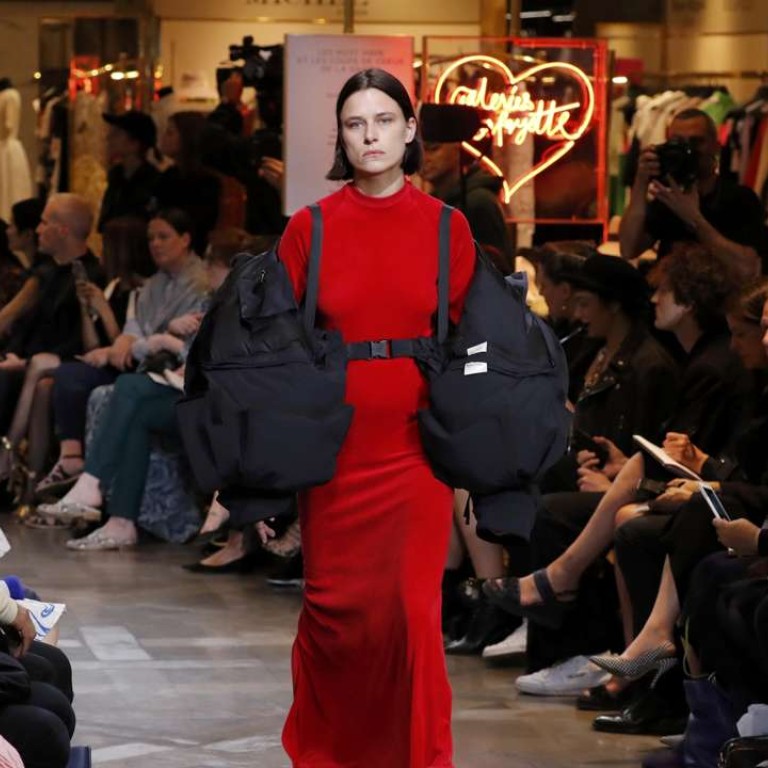
Juicy Couture meets haute couture as fashion rebel Vetements shakes up Paris
Label led by Demna Gvasalia presents jarring looks, appropriates others’ trademark garments, and blurs differences between high and low end – mixing Dr Martens and Manolo Blahniks
Rebel brand Vetements sent fashion into a spin with an haute couture show in Paris that broke all the rules, appropriating clothes and shoes from 17 other brands and recutting them in its own irreverent, neo-Soviet street style.
The most talked about brand in fashion had been invited to show as a guest in the elite, uniquely Parisian events, seen as the pinnacle of exclusive made-to-measure clothing. But instead of bowing to couture’s near century-long tradition of handmade artistry, Vetements called in brands as diverse as Levi’s, Mackintosh and Brioni to supply them with their trademark garments, which they then remade.
The result was an attention-hogging show that left few indifferent.

Social media was abuzz afterwards with the red velour tracksuits with “Juicy” picked out in crystals across the rear end, gigantic dungaree aprons and hoodies with shrunken hoods.
The show began with the oversized jackets that have become Vetements’ calling card, replete with their overlong “gorilla sleeves”.

He even seemed to be trying to create a previously uncharted erogenous zone halfway between the navel and the sternum by pulling diamond-shaped peep holes in his Comme des Garcons shirts.
Also striking was how Georgian-born Gvasalia – who fans hail for defying the “system” – set out to blur the difference between high- and low-end brands, with Dr Martens boots and Manolo Blahnik stilettos sharing the same catwalk.
Twitter reaction to the Vetements show
“The idea was to work with brands and their specialised suppliers,” he said backstage after the show.
In a statement, the label said: “Vetements unsubscribes to the difficult production cycle that has been forced upon many designers” – a reference to the punishing turnaround times creators increasingly must adhere to.
“Trailblazing brands – trendsetters of their time – are still relevant today. Not only because of their acclaimed designs, but also because of years of perfecting material and production methods,” it added.

While many questioned whether Vetements’ spring men’s and women’s show was really haute couture, few doubted that it was a shock to the increasingly frenetic fashion system which has seen many designers complain of burnout.
Unlike most of their peers who produce several collections, Vetements – founded by 35-year-old Gvasalia and his younger brother Guram only two years ago – make only two a year so their clothes can spend longer in the shops.


Another post-Soviet creator also impressed on Sunday, with the Kazakh designer Ulyana Sergeenko using suspender belts worn over clothes to symbolise “Khrushchev’s thaw” in the 1960s.
In the two other highlights of the opening day, Donatella Versace unveiled an untypically demure, 1950s-influenced collection of shimmering gowns that still managed to show off the legs.
And Yuima Nakazato – best known for his creations for the singer Lady Gaga – became the first Japanese designer to show in haute couture for more than a decade.
His futuristic feathery ensembles used coloured layers of PVC cut by machine and then “treated as origami”.
“Combining technology with craftmanship could be the future of couture,” he said.

.png?itok=arIb17P0)